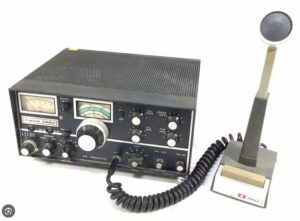The Early Days of Ham Radio
Ham radio, also known as amateur radio, has come a long way since its humble beginnings in the early 20th century. Back then, operators communicated using Morse code. They tapped out messages on telegraph keys to exchange information and connect with others around the world. It was a hobby that required technical knowledge and a passion for communication.
However, as technology advanced, so did ham radio. New high tech ham gear was developed, allowing for voice communication instead of just Morse code. With the advent of transistors and microprocessors, ham radio rigs became smaller, more portable, and easier to use.
The Rise of High-Tech Gear
Today, ham radio enthusiasts have access to a wide range of high-tech ham gear gear that makes the hobby even more exciting and accessible. Modern ham radios, or transceivers, are compact and feature-packed. They offer multiple modes of communication, including voice, digital modes, and even satellite communication.
One of the most significant advancements in ham radio gear is the integration of software-defined radios (SDR). These radios use sophisticated digital processing to provide enhanced reception and transmission capabilities. They can decode weak signals, filter out interference, and even simulate different types of radios.
Ham Radio in the Digital Age
The popularity of ham radio has also grown worldwide, thanks to the internet and online communities. Ham radio operators can now connect with others from different parts of the globe. By using online forums, social media groups, and even live video chats. These platforms provide a space for knowledge sharing, troubleshooting, and fostering a sense of camaraderie among ham radio enthusiasts.
Furthermore, ham radio has become an invaluable tool during emergencies and natural disasters. When traditional communication systems fail, ham radio operators can step in and provide vital communication links. Many ham radio organizations also actively participate in emergency response drills and provide training on emergency communications.
![]()


